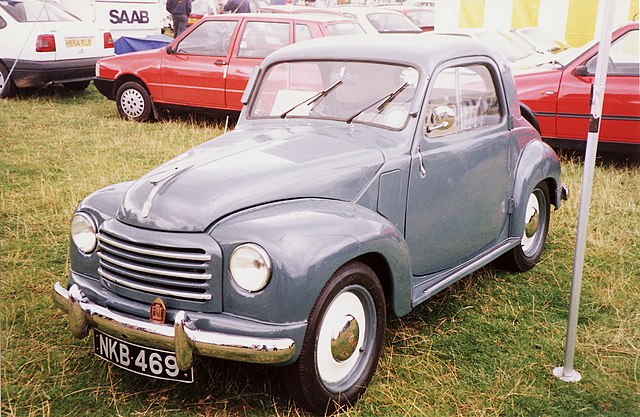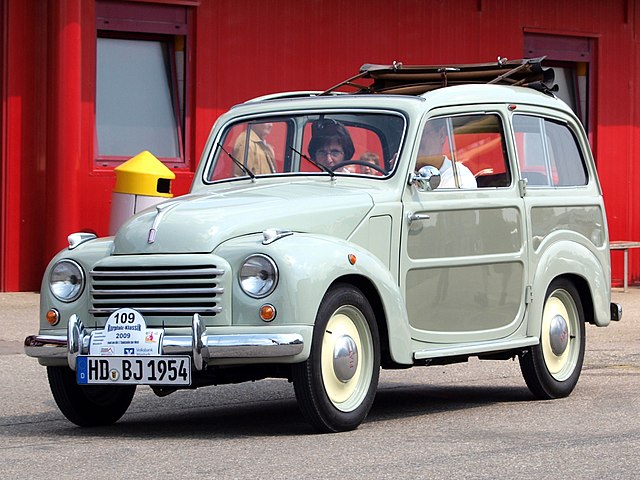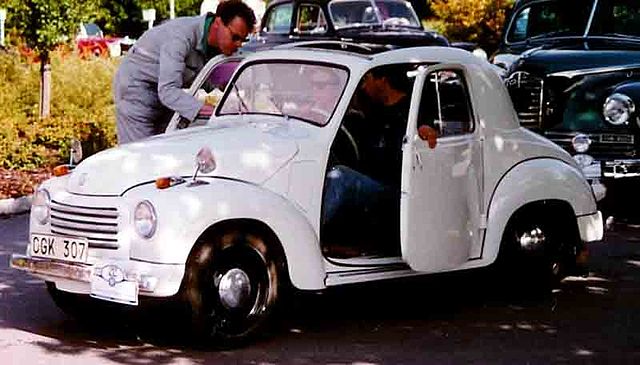
The Fiat 500, affectionately known as the “Topolino,” which translates to “little mouse” in Italian, has left an indelible mark on the automotive industry. Launched in 1936 and produced until 1955, this diminutive vehicle was part of an ambitious plan by Fiat’s then-chairman, Giovanni Agnelli, to create an affordable car for the masses.
Designed by the legendary engineer Dante Giacosa, the Topolino was one of the smallest cars in the world at the time of its debut and is often credited with helping to motorize pre-World War II Italy.
Design and Features

The design of the Fiat Topolino was revolutionary for its time, embodying a unique blend of compactness and elegance. The car measured only 3.2 meters in length and was powered by a modest 569 cc four-cylinder, water-cooled engine, which produced about 13 horsepower.
Despite its small size, the Topolino was known for its surprisingly spacious interior and its ability to maintain fuel efficiency, offering approximately 40 miles per gallon. The vehicle’s layout featured a front-engine, rear-wheel-drive configuration, and it was initially available as a two-door sedan, convertible, and a van variant.
In terms of aesthetics, the Topolino had a charming and distinctive round-nosed front end, with large headlights and a vertical waterfall grille that gave it a cheerful facade. This design not only enhanced its visual appeal but also contributed to its aerodynamic efficiency.
Over the years, the design underwent several modifications, adapting to post-war tastes and technological advancements without losing its iconic silhouette.
Technological Innovations

The Fiat 500 Topolino was a pioneer in integrating advanced technologies into a compact car framework. It featured an independent front suspension and a hydraulic braking system, which were innovative for cars in its class during the 1930s and 1940s.
These features provided a level of comfort and safety that was uncommon in other vehicles of similar size and price point.
Another notable innovation was its engine layout. The placement of the engine in the front allowed for better weight distribution, which improved handling and stability. The Topolino’s engine was linked to a four-speed manual gearbox that provided a smooth and responsive driving experience, further highlighting Fiat’s commitment to blending performance with practicality.
Cultural and Historical Impact

The Fiat 500 Topolino not only revolutionized automotive design but also had a profound cultural impact. It became a symbol of economic recovery and technological progress in Italy during a period marked by political and social upheaval.
The car was widely popular among the Italian middle class and was even featured in numerous films and advertisements, cementing its status as a cultural icon.
During World War II, the Topolino was used by both the Italian and German armies, showcasing its versatility and reliability. Post-war, it continued to be a popular choice due to its affordability and economical operation, aiding in the mobility of the general population during Italy’s economic reconstruction.
Legacy and Influence

The legacy of the Fiat 500 Topolino extends beyond its production years. It set the stage for future models of compact city cars and influenced several generations of Fiat vehicles. The Topolino’s principles of affordability, efficiency, and accessibility continue to resonate in the auto industry, reflected in modern iterations of the Fiat 500 series introduced in the 21st century.
Collectors and vintage car enthusiasts continue to celebrate the Topolino, with many restored models appearing in classic car shows and rallies around the world. Its design and engineering principles are studied and admired as a testament to Fiat’s innovative spirit during a transformative era in automotive history.
In summary, the Fiat 500 Topolino was much more than just a car; it was a beacon of hope and a harbinger of modern automotive design, leaving an enduring legacy that continues to influence the automotive industry and car culture globally.
